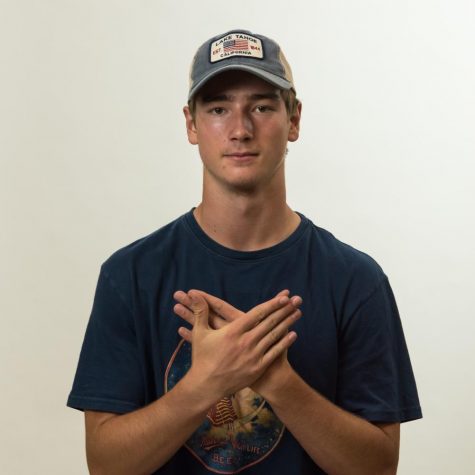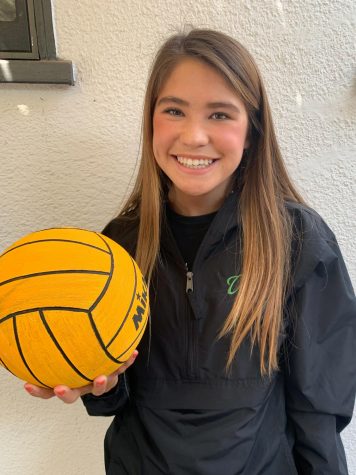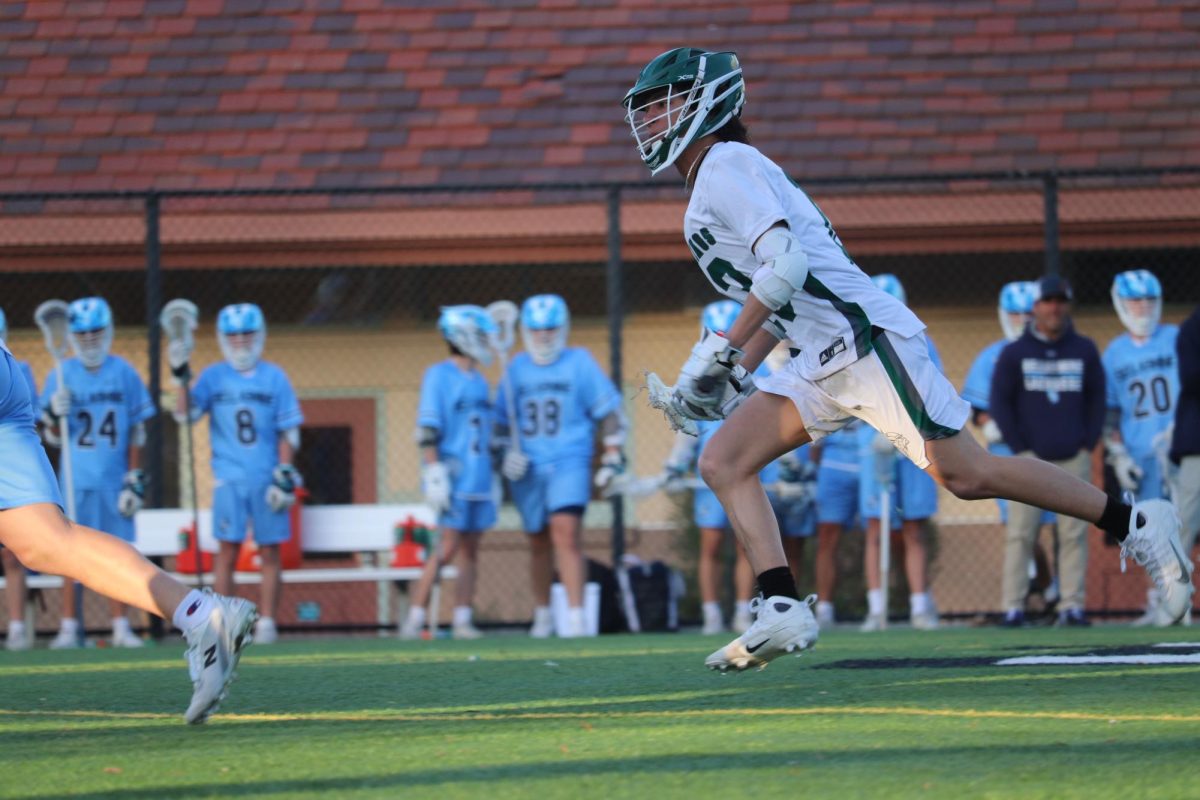Psyched for Spike
Over the last five years, Spikeball has developed from a previously abandoned game known as Roundnet, into a ESPN televised sport, all thanks to Spikeball’s CEO, Chris Ruder.
November 12, 2019
What started as an eclectic version of backyard volleyball has now become not only a wildly popular name-brand game, but also a staple everywhere from ESPN’s homepage to NFL practices.
But the neon yellow net and ball duo that’s instantly recognizable today hadn’t always been so popular. It was thought up by Jeff Knurek in the 1980s–indeed, Spikeball has been on the shelfs since 1989, an idea so promising it’s survived 30 years and counting. Knurek was the mastermind behind the game: he thought of it, named it, designed it, and wrote the rules that remain the base of the game to this day. The idea had clear potential – and Tomy Toy Company saw it. The Japanese entertainment company purchased Knurek’s idea, making it his first invention to hit the market.
Much of the premises remained the same: the game was meant to be a fun, portable, two-on-two variation of volleyball that could be played nearly everywhere. It didn’t require athletic prowess or the fancy materials that a full game of volleyball demanded, and it didn’t have complicated rules. Spikeball wasn’t quite a sport, but it wasn’t quite a recreational game, either.
But despite its seeming appeal, Spikeball was only on the market for two years. Its popularity spiked originally, but by 1995 the game had somewhat faded out of the popular market. That is, until its potential started to dawn on Chris Ruder.
He’d been one of the early consumers of the game, having purchased it in its earliest days in a 1989 toy store, and loved it.
“Sports weren’t a huge part of my life growing up,” Ruder said. “But Spikeball was this thing that… something just clicked, and I absolutely loved it.” He found the game had the magnetic appeal that Knurek had perhaps envisioned. Throughout his childhood and teenage years, strangers had consistently approached him, asking what exactly the game was, and — more importantly — where they could buy it.
At some point, a lightbulb went off in Ruder’s brain. This was a game that could be big, much bigger than dusty toy store shelves and unkempt lawns. This could be a global phenomenon. That realization conveniently aligned with Ruder’s discontent with his office job. Ruder made the riskiest decision of his career when he decided to abandon a secure job position to pursue what amounted to a trampoline net and a ball. But that genuine love for the product propelled him to trust that the potential he saw in the product was real.
So he did what any budding entrepreneur does: he rebranded the game, gave it a “Caterpillar tractor” black-and-yellow look meant to emulate toughness, and he went on Shark Tank.
The experience was, in a word, “nerve-wracking.” One of the main components of the show is a pitch that entrepreneurs must deliver. In not much more than a minute, they must detail all of the reasons why their project should receive hundreds of thousands of dollars funding, and why it deserves that money more than any other project. No pressure.
“I was incredibly nervous going in,” Ruder said. “The part that I was most nervous about was the memorized pitch… you have to give that memorized pitch that’s maybe 90 seconds, two minutes long. Memorization has never been my strong suit. My high school and college GPA will definitely align with that.”
Selling a business idea, though, is an entirely different realm than that of college classrooms. For one, the intimidation factor of the Sharks is considerably more than that of even the strictest professor.
“So [there’s] five of [the Sharks] just staring at you, and they tell you, ‘You have to stand there for a minute or two in complete silence before you can begin your pitch,’” Ruder said. “That minute or two feels like about six weeks. And you’re just standing there staring at Mark Cuban, just [thinking] this is really uncomfortable.”
Cuban was one of the investors Ruder most wanted to get a deal done with. So when he was one of the first to drop out, Ruder was understandably disappointed. But he’s gotten the last laugh — Cuban has said himself that Spikeball was the one that got away, that he’s kicking himself for passing on it.
He isn’t wrong. Passing on Spikeball may not have seemed consequential at the time, but the game has exploded into a national phenomenon. Spikeball made $4,000 in “pity money” from friends and family in the first month of sales; it was earning $1 million by 2013. And while the deal that Ruder did strike on Shark Tank — $500,000 from Daymond John — ultimately fell apart, the setback didn’t set Ruder back for long. The element that had elevated the product for so long, the human interest that was naturally piqued from watching other people play the game, carried over to the show. With seven million viewers gaining exposure to Ruder’s idea, the popularity of Spikeball skyrocketed.
“There’s a viral element built into the product,” Ruder said. “When [people] go play, they’re probably going to play in a public area, whether that be the yard at a high school, college campus, public beach, or whatever it may be. So the product travels on its own fairly well.”
In its early days, Ruder had always kept a personal touch on the company, determining exactly where and how people had heard about the product. But as the growth continued with little signs of stopping, that became impossible.
“I’d go, ‘Hey, Susie, thanks for the order. I’m actually heading to the post office later tonight, I’ll drop it off. I see you live in San Francisco. I used to live there. Absolutely love that city. By the way – if you don’t mind me asking, how’d you hear about Spikeball?’”
That natural charisma paid off for Ruder. He’d heard from three main groups originally — PE teachers, Ultimate Frisbee players, and faith-based youth groups all made up much of the consumer base. Hearing from youth groups was revelatory, but not because of the religious aspect: this was simply a game that transported people back to their adolescence.
It’s that unadulterated childlike joy that has allowed Spikeball to take off as it has. Plenty of young people are dedicated fans, but Spikeball’s edge comes from its ability to make anyone feel like they did when they were young again. It’s what’s made the game such a staple at Paly, a school where the students rely on those bursts of time when the overwhelming stress of school can melt away, and all they have to worry about is not letting that ball hit the ground. A lunch period without a Spikeball net appearing somewhere on the quad is a rare occurrence, and last spring, ASB held an intramural spike ball tournament in which over 100 students participated. And that’s been the life-force of the game: community.
“I get much more satisfaction out of hearing stories of how Spikeball has affected someone’s life,” Ruder said. “I’ve seen numerous photos of brides in their beautiful wedding dresses, playing Spikeball…there is no higher compliment to the work you’re doing than to see that somebody wants to take your product, something that you and all 27 of our employees have been building and they want to include it in some of life’s most special moments.”
And those moments have taken to the global stage. Spikeball is now being televised on ESPN; its national tournament attracts competitive players from all reaches of the country. There are tiers of players that culminate in the Spikeball Elite, a level of glory that only eight men’s teams and four women’s teams belong to each year. And there are cash prizes involved, careers stemming from the game; one pro player skipped his college graduation ceremony in order to compete in a tournament at Lancaster.
Those tournaments now span the entire nation. A national tournament took place on October 5 in Richmond, Virginia with over 200 teams competing across seven divisions. For the pro division, the Cisek/Showalter team beat out 15 other teams and took home a cash prize of $4,000. The duo debuted in Summer Smash 2015, where they played under the team name “Moist.” Now, and since 2017, they’re ranked first in the nation.
Spikeball has established itself firmly in the mainstream — there’s little doubt about that. But even behind the scenes, its use is far more expansive than its diminutive appearance would suggest. A variety of sports have begun using Spikeball games as a form of cross-training. Water polo players have used it to strengthen their legs by putting the net into the pool and treading. Wrestlers have used it as a form of active recovery. Hockey players have utilized the game to improve their overall mobility on the ice. Football players have used it to help them with their hand-eye coordination. The 49ers went so far as to hold a Spikeball tournament in June of 2017. Per the official Spikeball website, NFL trainers believe Spike Ball works on players’ “agility, lateral movement, and hand eye coordination.” And Connor McDavid, one of the NHL’s youngest stars, is a fan: “You’re just moving around, get your hand-eye going, competitive juices flowing too,” McDavid said. “It’s a lot of fun.”
So what’s next for the nontraditional sport that’s become a traditional pastime in millions of American homes? Keep fanning the flames of a game that’s caught fire.
“The mission of the company is to create the next great global sport,” Ruder said. “Hearing the activity that’s going on here at Paly just warms my heart. So how can we make sure that we’re giving the community members the tools and the help they need to grow their own communities?”
That sense of togetherness is at the core of Spikeball. It’s what they’ll keep at the core of their product’s mission, even as the game itself grows faster and goes further than its inventor — and reinventor — could have ever imagined.
“Yes, we make a plastic net and we have a rubber ball,” Ruder said. That’s not what makes us special, though. It’s the brand and what makes the brand special is the community.”














